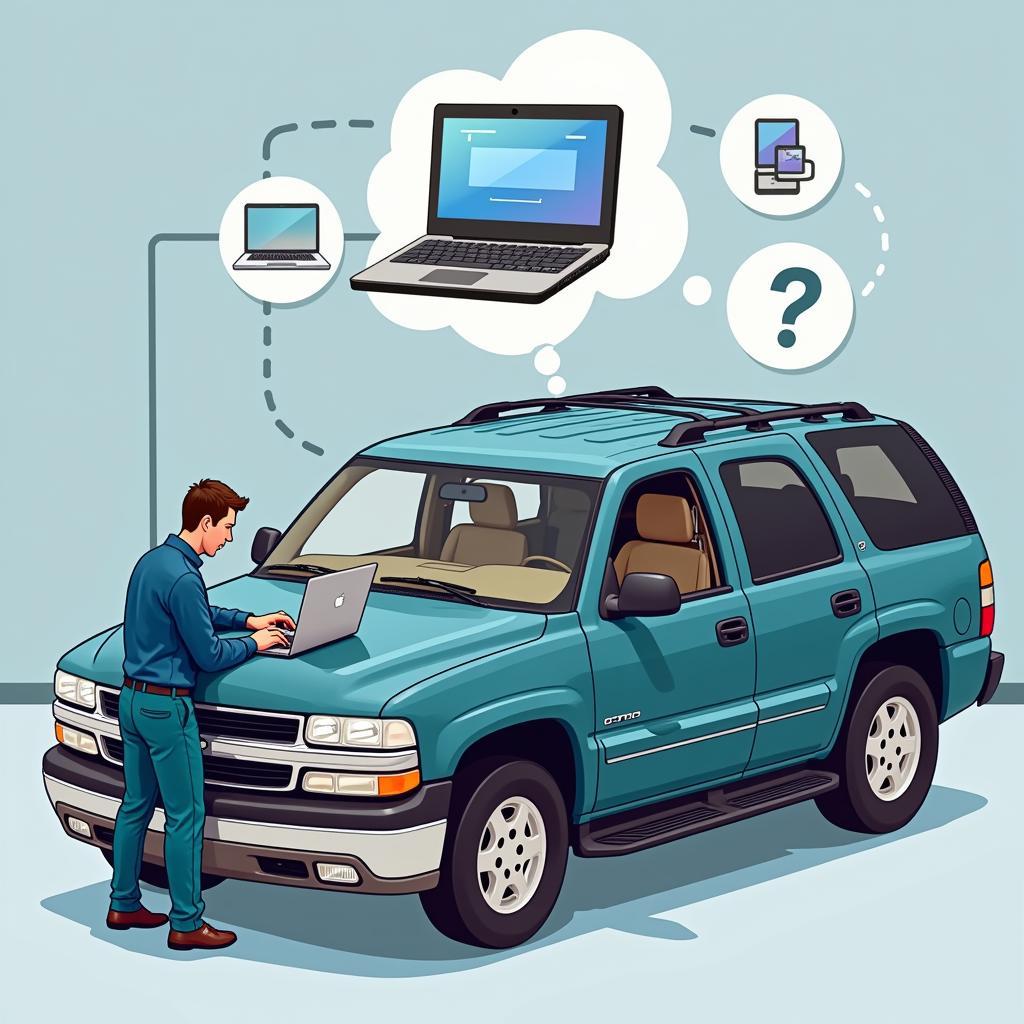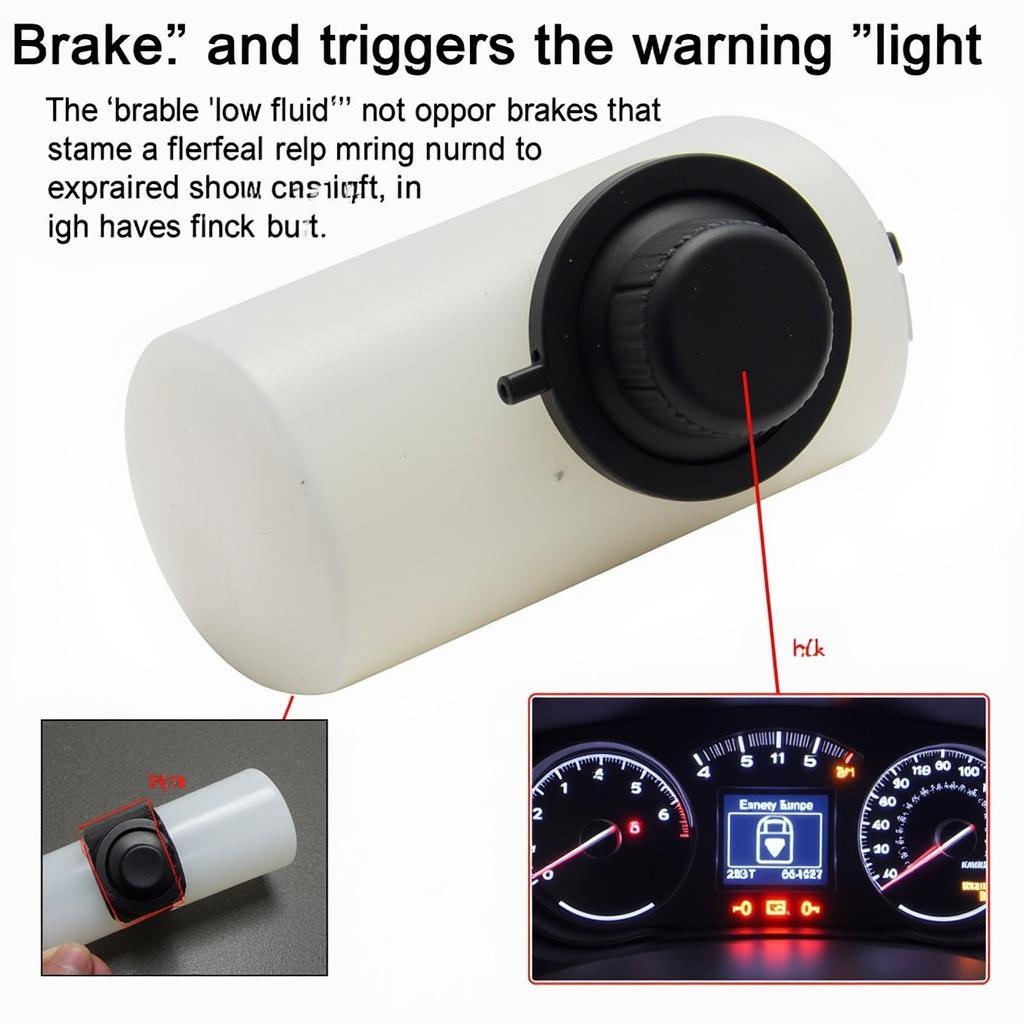A glowing brake warning light on your 2001 Chevy Tahoe dashboard can be a nerve-wracking experience. It signals a potential issue with your braking system that shouldn’t be ignored. While it might seem daunting, understanding the common causes and knowing how to troubleshoot can save you time, money, and potential danger on the road.
This comprehensive guide delves into the reasons behind a 2001 Chevy Tahoe brake warning light illuminating and equips you with the knowledge to address the issue effectively.
Common Causes of a 2001 Chevy Tahoe Brake Warning Light
Several culprits could be triggering your brake warning light. Here are some of the most prevalent:
-
Low Brake Fluid: This is the most frequent cause. Brake fluid is the lifeblood of your braking system, and a leak or low fluid level can significantly compromise braking performance.
-
Worn Brake Pads: Brake pads naturally wear down over time. When they reach a critical thickness, the brake pad sensor will trigger the warning light, signaling it’s time for replacements.
-
Faulty Brake Light Switch: The brake light switch activates your brake lights when you press the pedal. A malfunctioning switch can disrupt this signal, leading to the warning light illuminating.
-
ABS Issue: Your 2001 Chevy Tahoe has an Anti-lock Braking System (ABS) designed to prevent wheel locking during braking. A problem within the ABS module or wheel speed sensors can trigger the warning light.
-
Parking Brake Engaged: It might seem obvious, but sometimes the simplest solution is the right one. If your parking brake isn’t fully disengaged, the warning light can stay on.
Troubleshooting Your Brake Warning Light
Before heading to a mechanic, here’s a step-by-step guide to help you diagnose the issue:
-
Check the Parking Brake: Ensure your parking brake is fully released. Even a slightly engaged parking brake can trigger the light.
-
Inspect Brake Fluid Level: Locate the brake fluid reservoir under the hood. Check the fluid level, ensuring it’s between the minimum and maximum markings.
-
Examine Brake Pads: Visually inspect your brake pads through the wheel spokes. If you see less than ¼ inch of pad material remaining, it’s time for new brake pads.
-
Listen for Unusual Noises: While driving, pay attention to any unusual sounds like grinding, squealing, or clicking coming from your brakes. These could indicate a serious problem.
-
Feel the Brake Pedal: Does the pedal feel spongy, go too low, or vibrate when engaged? Changes in pedal feel can signal a problem within the hydraulic system.
When to Seek Professional Help
If your DIY troubleshooting doesn’t pinpoint the problem or you’re uncomfortable working on your brakes, it’s crucial to seek professional help. A qualified mechanic specializing in 2001 Chevy Tahoes can accurately diagnose the issue using advanced diagnostic tools and recommend the appropriate repairs.
“Ignoring a brake warning light can have severe consequences. It’s always better to err on the side of caution and have your brakes inspected by a professional,” advises John Miller, a senior automotive technician with over 20 years of experience.
Remote Diagnostic and Programming Options
Advancements in automotive technology now offer remote diagnostic and programming solutions. These services allow certified technicians to remotely access your 2001 Chevy Tahoe’s onboard computer system to diagnose problems and even program new software updates.
While not all brake issues can be resolved remotely, this technology can be incredibly useful in identifying problems with the ABS system, resetting warning lights after minor repairs, and ensuring your Tahoe’s software is up-to-date.
 Remote Diagnostics
Remote Diagnostics
Conclusion
A glowing brake warning light on your 2001 Chevy Tahoe is a serious signal demanding immediate attention. While some causes might be simple to address, others require the expertise of a qualified mechanic. By understanding the common reasons behind this warning light and utilizing the troubleshooting steps provided, you can take proactive measures to ensure your safety and the optimal performance of your vehicle. Remember, when it comes to brakes, it’s always best to err on the side of caution.

